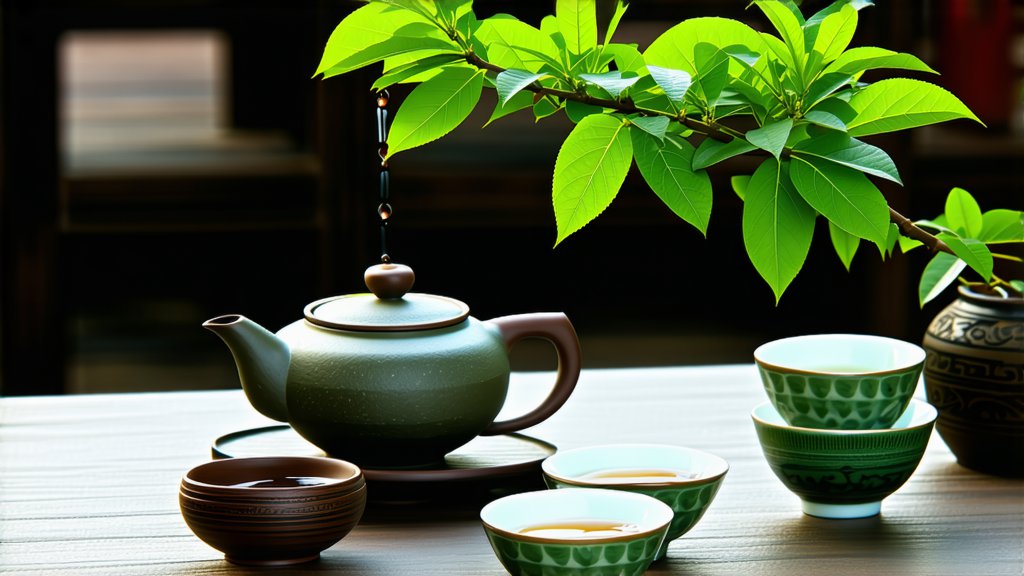
In the vast and diverse landscape of Chinese tea culture, few varieties captivate the senses and the imagination quite like Tieguanyin. This exquisite oolong tea, originating from Anxi County in Fujian Province, stands as a testament to centuries of tea cultivation expertise and cultural heritage. With its rich history, intricate production process, and unique flavor profile, Tieguanyin has earned a prestigious place among tea connoisseurs worldwide. Join me on a journey through the annals of this remarkable tea, exploring its historical roots, varieties, meticulous craftsmanship, and the art of its appreciation.
Historical Roots: Tracing Tieguanyin's Journey
The story of Tieguanyin begins in the early 18th century during the Qing Dynasty. According to legend, it was discovered by a poor scholar named Wei Yin (魏荫), who found a wild tea plant growing under a sacred Bodhi tree in Anxi County. Impressed by its distinct aroma and taste, he propagated the plant, naming it "Tieguanyin" after the Bodhisattva Guanyin, symbolizing compassion and mercy. Over time, this tea gained immense popularity within China before crossing borders to enchant global tea enthusiasts.
Varieties of Tieguanyin: A Spectrum of Flavor
Tieguanyin is not a monolithic entity; rather, it encompasses a range of sub-varieties, each with its own unique characteristics. These include:
-
Xiang Pi Zhong (香片种): Known for its pronounced floral notes and orchid-like fragrance, this variety is often considered the quintessential representation of Tieguanyin's aromatic allure.
-
Shui Xian (水仙): Characterized by a more robust body and a subtle mineral sweetness, Shui Xian offers a balance between strength and elegance.
-
Ben Shan (本山): Translating to "native mountain," Ben Shan showcases a delicate balance of floral and fruity flavors, reflecting the purity of its high-altitude origins.
Each variety reflects the terroir of its specific region within Anxi County, demonstrating how geography and climate shape the character of this extraordinary tea.
The Craft of Creation: From Leaf to Cup
The production of Tieguanyin is an art form that combines traditional wisdom with precise techniques. Here's an overview of its meticulous manufacturing process:
-
Plucking: Only the tender buds and top leaves are harvested, typically between April and October, ensuring optimal freshness and quality.
-
Withering: Freshly picked leaves undergo a gentle withering process to reduce moisture content and initiate enzymatic activity.
-
Fixation: This step involves brief heating to halt oxidation while preserving the greenish hue of the leaves.
-
Rolling: Leaves are rolled to break cell walls, facilitating the release of flavor compounds during brewing.
-
Oxidation: Unlike black teas, oolong teas like Tieguanyin undergo partial oxidation, striking a balance between green and black tea characteristics.
-
Roasting: A careful roasting process enhances the tea's aroma and fixes its flavor profile.
-
Sorting and Grading: Finally, the tea is sorted based on quality, with premium leaves selected for their aesthetic appeal and superior taste.
The Gongfu Brewing Experience
To truly appreciate Tieguanyin, one must engage in the traditional Gongfu tea ceremony, which emphasizes mindfulness, respect, and the art of tea making. Here’s a guide to brewing this exceptional tea:
-
Preparation: Use a Yixing clay teapot or a Gaiwan, along with a fine mesh strainer to capture the smaller leaf particles.
-
Measurement: For a standard 150ml pot, use approximately 7-8 grams of Tieguanyin leaves.
-
Rinsing: Rinse the leaves quickly with near-boiling water to awaken their flavors and discard this initial rinse.
-
Steeping: Infuse the leaves with water heated to around 90-95°C (195-205°F) for the first brew, gradually increasing steeping times for subsequent infusions. Short steeps of about 15-30 seconds are typical.
-
Aroma and Taste: Savor the evolving aromas from each brew, noting the transition from floral and fruity notes to deeper, more complex profiles. Sip slowly, allowing the tea to coat your palate and reveal its multifaceted flavors.
-
Multiple Infusions: Tieguanyin is renowned for its ability to yield multiple infusions, each offering a distinct yet complementary tasting experience.
Conclusion: Embracing Tieguanyin's Timeless Charm
Tieguanyin represents more than just a beverage; it embodies a profound connection to nature, tradition, and the artistry of tea making. Its history spans centuries, its varieties offer a kaleidoscope of flavors, and its brewing ritual invites introspection and tranquility. As you embark on your own exploration of Tieguanyin, whether through sipping, studying, or sharing, may you find not only a delightful tea but also a window into the soul of Chinese tea culture.